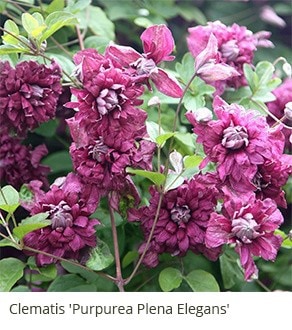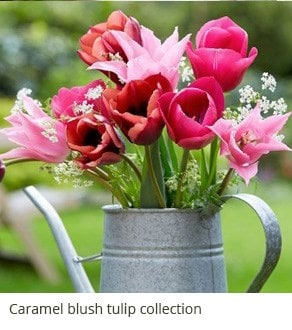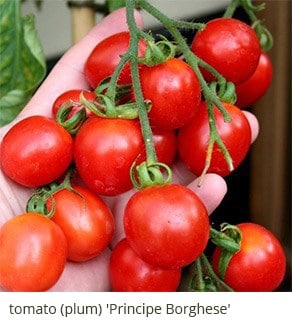|
Japanese anemones are graceful at every stage. They send up dark slender stems that lean slightly and by late summer they’re topped by round buds that hang in the garden like grey seed pearls, catching any late-summer dew. Finally the flowers open and they come in pure-white and various shades of pink. There’s always a ring of golden stamens set round a jade-green middle - for these fascinating plants come straight from the Orient.
The term Japanese anemone is misleading however. A. hupehensis is actually a native of Hupeh province in eastern China, but it has been grown in Japanese gardens for centuries, hence the confusion. Robert Fortune (1812-1880) introduced it into Europe in 1844, having discovered it running between tombstones in a Shanghai graveyard. It was one of the plants grown to celebrate the dead, possibly chosen because these plants are very long lived. It also rambles in the garden and some varieties do seem to enjoy popping up through stonework or paving close to buildings, or paths. That wandering habit is part of its charm, for it places itself and looks better for it.
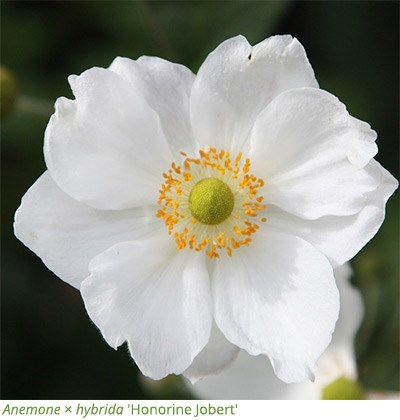 These elegant plants flower from August onwards, carrying summer into autumn, and they lift the garden when it tends to look shabby and dry. They add a fresh dimension because their simple flowers look so pristine and they look you in the eye when so many daisies face upward to heaven like plates spinning at the circus. One of the very best is a dark-leaved, pure-white single-flowered hybrid called Anemone x hybrida 'Honorine Jobert' and this really shines in some shade. It would be perfect popping up through hardy British ferns. Or the black-bristled Himalayan form of Dryopteris wallichiana in good soil. Or simply position it in front of a yew hedge and let it ramble towards the sunlight. This virginal Japanese anemone can also extend the display in a woodland border that peaks in spring - and it will flower for many a week. In short, it’s far better in shade. These elegant plants flower from August onwards, carrying summer into autumn, and they lift the garden when it tends to look shabby and dry. They add a fresh dimension because their simple flowers look so pristine and they look you in the eye when so many daisies face upward to heaven like plates spinning at the circus. One of the very best is a dark-leaved, pure-white single-flowered hybrid called Anemone x hybrida 'Honorine Jobert' and this really shines in some shade. It would be perfect popping up through hardy British ferns. Or the black-bristled Himalayan form of Dryopteris wallichiana in good soil. Or simply position it in front of a yew hedge and let it ramble towards the sunlight. This virginal Japanese anemone can also extend the display in a woodland border that peaks in spring - and it will flower for many a week. In short, it’s far better in shade.
Confusion abounds about how this French anemone occurred. Some say it was found as a seedling in 1858 in Monsieur Jobert's garden in Verdun and was then introduced by Victoire Lemoine, a leading French nurseryman from Nancy in France. Others say it was a sport, a white-flowered shoot found on a pink plant. Whichever, it’s by far the best white Japanese anemone going, despite being over 160 years of age, because it’s so elegant and clear cut.
We can also thank M. Lemoine for producing the showy tree lilacs while pinned at home by the Franco Prussian War of 1870. Monsieur Lemoine raised the first double fuchsia, the first double tree lilac and improved the size and quality of herbaceous peony flowers. He was the first foreign recipient of the Victoria Medal of Honour - the VMH - and this is still the highest honour bestowed by the RHS. Despite his love of breeding doubles, he obviously fell in love with the simple charm of this single white anemone - the Audrey Hepburn of the plant world!
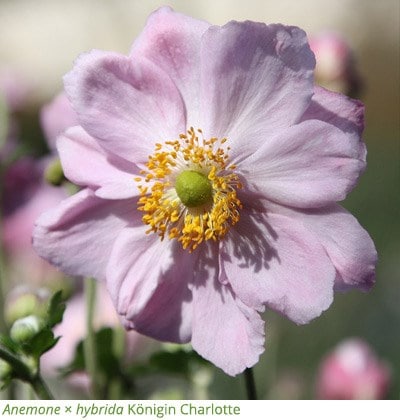 Taller pale-pink Japanese anemones have the same air of simple elegance. ‘September Charm’, named in 1932, flowers a little later and lives up to its name really well - although the flowers do have an extra petal or two. The slightly cupped flowers have a much more luxuriant ring of stamens than many and the backs of the petals are darker than the baby-pink uppers - so it looks good from every angle. It’s very good with hardy fuchsias, of purple and pink persuasion, whether it’s the luscious ‘Mrs Popple’ or the daintier ‘Riccartonii’, and it will fill in the gaps as it travels. This combination is particularly effective in a narrow border on the shadier side of a hedge. Or use it close to the ruby-red smoke bush Cotinus coggygria ‘Royal Purple’. It’s one of the most free-flowering and more clump-forming than many and certainly the one with the most silvery shimmer. Taller pale-pink Japanese anemones have the same air of simple elegance. ‘September Charm’, named in 1932, flowers a little later and lives up to its name really well - although the flowers do have an extra petal or two. The slightly cupped flowers have a much more luxuriant ring of stamens than many and the backs of the petals are darker than the baby-pink uppers - so it looks good from every angle. It’s very good with hardy fuchsias, of purple and pink persuasion, whether it’s the luscious ‘Mrs Popple’ or the daintier ‘Riccartonii’, and it will fill in the gaps as it travels. This combination is particularly effective in a narrow border on the shadier side of a hedge. Or use it close to the ruby-red smoke bush Cotinus coggygria ‘Royal Purple’. It’s one of the most free-flowering and more clump-forming than many and certainly the one with the most silvery shimmer.
There’s a semi-double, pale-pink called 'Königin Charlotte' AGM (Wilhelm Pfitzer 1898) and some prefer the fuller flowers. It has stood the test of time and you can always pick it out, because the frillier than usual lower leaves overlap each other - like piled up scallop shells. It’s been a favourite of many in the past, but it is definitely one of the more vigorous. In late summer it takes on a cool silver-pink shimmer but the purple-pink backs of the petals add depth and definition.
Many of these Japanese anemones are well over a hundred years old and still going strong and that is an indicator of their appeal and their strong constitution. It could soften darker asters, or pop up among strong-pink to purple-pink roses or flow along the front of a dark-purple clematis such ‘Polish Spirit’, or the dusky pink pompoms of ‘Purpurea Plena Elegans’.
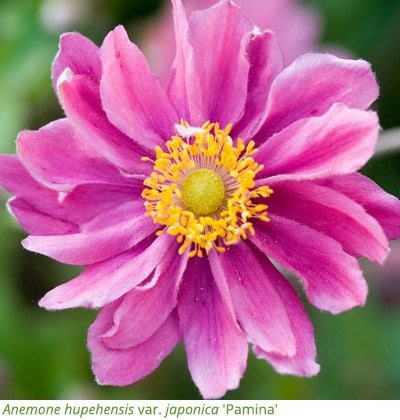 A newer German variety with far more striking flowers is ‘Pamina’. This carmine-pink seedling was found by Hans Simon in 1983 and it’s very floriferous and earlier to flower. It is a prodigious traveller in a border, but it adds a lot to a flower border in August - never the best month in the garden. It’s extremely useful in rose beds containing repeat-flowering roses, because it plugs the gap between the first flush of roses and the September follow up. It’s semi-double and the flowers last a long time, although extremely hot conditions do frazzle the flowers a little. It is the most vivid of all Japanese anemones and it will stretch upwards to four feet (120cm) if it has to. A newer German variety with far more striking flowers is ‘Pamina’. This carmine-pink seedling was found by Hans Simon in 1983 and it’s very floriferous and earlier to flower. It is a prodigious traveller in a border, but it adds a lot to a flower border in August - never the best month in the garden. It’s extremely useful in rose beds containing repeat-flowering roses, because it plugs the gap between the first flush of roses and the September follow up. It’s semi-double and the flowers last a long time, although extremely hot conditions do frazzle the flowers a little. It is the most vivid of all Japanese anemones and it will stretch upwards to four feet (120cm) if it has to.
Prinz Heinrich', another ‘oldie’ from 1902, is slightly less neat due to having semi-double flowers with quilled petals. It’s still really worth growing because this has the reputation for flowering for longer than all the rest. When trialled at the Chicago Botanic Garden, it flowered for 64 days. It’s worth saying that light shade and good soil, that doesn’t lie wet in winter, promotes good growth and semi-doubles often flower for longer.
Naming is all over the place, but there are some beguiling Japanese anemones with very simple five-petalled pink flowers labelled A. hupehensis. Their petals are uneven in size, but two opposite petals are often a brighter pink. Their two-toned flowers radiate flickering colour from late-July onwards. The older variety, ‘Bowles’s Pink’, is so similar to ‘Hadspen Abundance’ that it may be the same plant. Both reach just over two feet (60cm), perhaps a little more, but they are not as elegantly tall as many others. However their shorter stature, together with an earlier flowering time, makes them useful at the front of a border that might contain later flowering Japanese anemones. The two-tone pink, slightly asymmetrical flowers allow them to mix with anything. They should continue to pop out flowers for six weeks and the backs of the petals are far darker. These ‘hupehensis’ types seem to roam less too, but then they have a gentler growth habit.
There’s a lot of choice and many have been admired by gardeners for over a hundred years and they’ll probably be here for another hundred.
|







